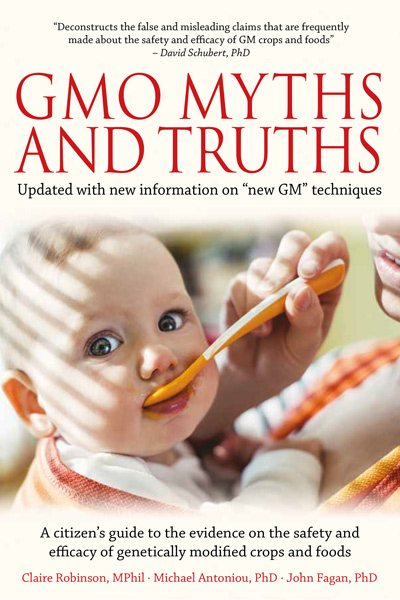
Scientists call for halt on work to develop mirror bacteria that would evade immune response
Leading scientists have called for a halt on research to create “mirror life” microbes amid concerns that the synthetic organisms would present an “unprecedented risk” to life on Earth.
The international group, including Nobel laureates, warn that mirror bacteria, constructed from mirror images of molecules found in nature, could become established in the environment and slip past the immune defences of natural organisms, putting humans, animals and plants at risk of lethal infections that could spread without check.
Although a viable mirror microbe would probably take at least a decade to build, a new risk assessment raised such serious concerns about the organisms that the 38-strong group urged scientists to stop work on them.
The scientists raise their concerns in a detailed report and a commentary in the journal Science.
The Science article says, “Unless compelling evidence emerges that mirror life would not pose extraordinary dangers, we believe that mirror bacteria and other mirror organisms, even those with engineered biocontainment measures, should not be created. We therefore recommend that research with the goal of creating mirror bacteria not be permitted, and that funders make clear that they will not support such work.”
“The threat we’re talking about is unprecedented,” said Prof Vaughn Cooper, an evolutionary biologist at the University of Pittsburgh.
The researchers fear not only that mirror microbes could cause lethal infections that would evade antibiotics, but also that mirror lifeforms could not be safely contained or kept in check by natural competitors and predators.
Dr Kate Adamala, a synthetic biologist at the University of Minnesota and co-author on the report, was working towards a mirror cell but changed tack last year after studying the risks in detail. “We should not be making mirror life,” she said. “We have time for the conversation. And that’s what we were trying to do with this paper, to start a global conversation.”
The issue lies in what’s known as chirality. The DNA of all living organisms is made from “right-handed” nucleotides, while proteins, the building blocks of cells, are made from “left-handed” amino acids. An object or system is chiral if it is distinguishable from its mirror image and one cannot be placed on top of another in such a way that all common parts coincide.
Mirror life cannot arise in nature. But scientists have already manufactured large, functional mirror molecules to study them more closely. Some have even taken steps towards building mirror microbes, though constructing a whole organism from mirror molecules is thought to be some years away.
According to a report in The Guardian, “The work is driven by fascination and potential applications. Mirror molecules could be turned into therapies for chronic and hard-to-treat diseases, while mirror microbes could make bioproduction facilities, which use bugs to churn out chemicals, more resistant to contamination.”
In the Science article, the scientists caution, “The capability to create mirror life is likely at least a decade away and would require large investments and major technical advances; we thus have an opportunity to consider and preempt risks before they are realised.” In their article, they describe “the current technical barriers, how they might be eroded by technological progress, and what we deem to be unprecedented and largely overlooked risks”. Finally, they call for “broader discussion among the global research community, policy-makers, research funders, industry, civil society, and the public to chart an appropriate path forward”.
Comments on the scientists’ statement
GMWatch takes the scientists’ commentary and report at face value. We appreciate their caution and believe that they are sincere in warning humanity about the dangers of mirror life. Even so, it’s possible that some could have additional motives.
Several scientists and medics who have spoken out against the reckless “gain-of-function” (GoF) research on viruses which likely caused the COVID pandemic that sickened over 770 million people and killed over seven million have commented on X that focusing on future possible risks is a dangerous distraction from the immediate problem of ongoing GoF virology research that could create another pandemic right now.
Richard Ebright, Board of Governors Professor of Chemistry and Chemical Biology at Rutgers University and a biosafety expert, said on X that the proposal for a ban on the construction of mirror lifeforms is “completely non-controversial”, but added that there is no prospect of the technology succeeding in creating such lifeforms in this decade: “As such, the commentary in Science and the accompanying media blitz appear to be a deliberate, and desperate, attempt to distract attention from the real and urgent threat posed by current virology – which caused the current pandemic and likely will cause the next one.”
Louis R. Nemzer, a biophysics professor at Nova Southeastern University, said the scientists’ move was “a costless way of appearing tough on biosafety”, adding: “By vigorously raising the alarm about something hypothetical and decades in the future, they can duck both of the tricky issues of the past cause of SARS2 [the COVID virus], as well as how to regulate GoF research in the future.”
Physician Dave Atkinson MD called the scientists’statement “virtue signalling so that they seem like they care about biosafety”.
Stuart Newman, professor of cell biology and anatomy at New York Medical College and a founding member of the Council for Responsible Genetics, agreed that mirror organisms are in the future. But he expects that will be in five years, rather than decades, and he warned: “Conventional microbes (bacteria, not viruses) with mirror gene circuits are in the reach of synthetic biology. They would be noxious GoF constructs.”
The man who wants mirror life research to continue
The Guardian article covering the call for the ban on mirror life research gives the last word to Prof Paul Freemont of Imperial College London, who was not involved in the scientists’ report. Freemont says, “Whilst the authors clearly point out the need for an open and transparent debate on the development of mirrored living organisms, there is also a need to identify the promise and positive uses of mirror chemistry in biological systems, albeit in a limited and perhaps future regulated manner.”
“Promise” and “positive” is supposedly balanced by “limited and perhaps future regulated”. In other words, he thinks scientists should move ahead with this extraordinarily risky work, “perhaps” – but not necessarily – relying on regulation to attempt to limit the risks.
Synbio risks
In conclusion, it’s worth asking how the scientists who caution against the creation of mirror life draw the distinction from other forms of synthetic biology (synbio) – the extreme genetic engineering that can create new lifeforms, with unpredictable consequences. Synbio research is proceeding at pace, with governments and scientists unable to agree how to regulate it or contain the risks. Society at large is not involved in the debate about where to draw the dividing line between “risky” and “unacceptable” applications of synbio. The scientists’ new call to halt work on mirror life should act as a wake-up call to everyone on all forms of synbio.










